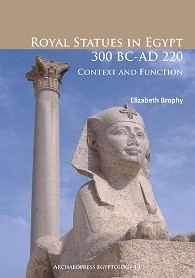| Main » Ad Board » ДРЕВЕН ЕГИПЕТ И АФРИКА » Изкуство |
| 24.12.2020, 10:36 | |
Епохата на Птолемеите и последвалият я период на римско господство се характеризират с голямо изобилие и разнообразие от статуи на владетелите. Различните техни типове са обусловени както от доминирането или хармоничното съчетаване на двете традиции - египетска национална и елинистична, така и от контекста на обкръжението: религизно-ритуална храмова или градска среда, функциите на монументите и носения от тях символизъм. - на английски език, от MEGA, формат PDF.Сваляне с ляв бутон (downloading by left button) и после през бутона Download. АЛТЕРНАТИВЕН ЛИНК / ALTERNATIVE LINK: АЛТЕРНАТИВЕН ЛИНК / ALTERNATIVE LINK: - на английски език, от Google Drive, формат PDF. Сваляне с ляв бутон (downloading by left button) от страницата на предоставящия сървър, после през бутона стрелка надолу/after by down arrow button.
| |
| Views: 501 | Placed till: 24.02.2022 | Rating: 0.0/0 | |

